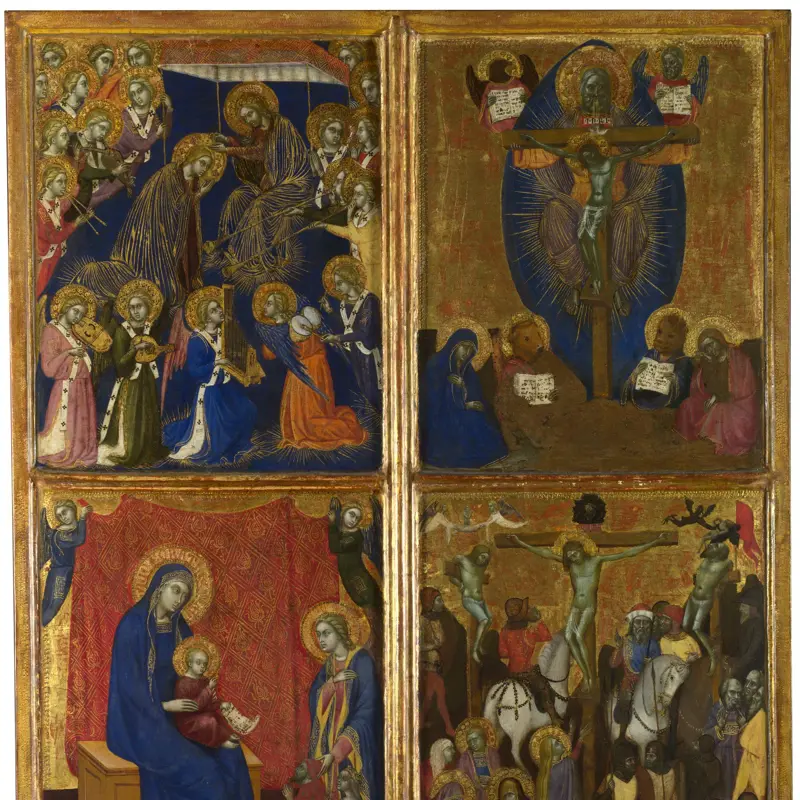Barnaba da Modena, 'Pentecost', 1377 (?)
About the work
Overview
Christ’s disciples were gathered together 50 days after his death when, according to the Bible, a strong wind began to blow. Flames like ‘tongues of fire’ appeared on their heads and they were filled with the Holy Ghost (Acts 2: 1–4). This event, called Pentecost, was when the disciples were given the divine authority to preach about Christ and his message.
Here, the Holy Ghost is represented as a tiny white dove above the Virgin Mary’s head and we can see the double-tongued flames on the disciples' heads. It is very likely that it was one of a series of scenes that made up a larger work, probably a triptych (a picture made up of three panels). In the church of San Giovanni Battista in Alba there is a picture of the Virgin and Child signed by Barnaba di Modena and dated 1377. It may have been the central panel of this triptych.
Key facts
Details
- Full title
- Pentecost
- Artist
- Barnaba da Modena
- Artist dates
- active 1361 - 1386
- Date made
- 1377 (?)
- Medium and support
- egg tempera on wood
- Dimensions
- 54.4 × 50.1 cm
- Acquisition credit
- Bought, 1895
- Inventory number
- NG1437
- Location
- Not on display
- Collection
- Main Collection
Provenance
Additional information
Text extracted from the ‘Provenance’ section of the catalogue entry in Dillian Gordon, ‘National Gallery Catalogues: The Italian Paintings before 1400’, London 2011; for further information, see the full catalogue entry.
Bibliography
-
1898National Gallery, Descriptive and Historical Catalogue of the Pictures in the National Gallery, with Biographical Notes of the Painters: Foreign Schools, 78th edn, London 1898
-
1913C. Ricci, 'Barnaba da Modena', The Burlington Magazine, XXIV, 1913, pp. 65-9
-
1951Davies, Martin, National Gallery Catalogues: The Earlier Italian Schools, London 1951
-
1961M. Davies, The Earlier Italian Schools, 2nd edn, London 1961
-
1986Davies, Martin, National Gallery Catalogues: The Earlier Italian Schools, revised edn, London 1986
-
1988Gordon, Dillian, National Gallery Catalogues: The Early Italian Schools before 1400, revised edn, London 1988
-
1991F. Zeri (ed.), Pinacoteca di Brera: Scuola emiliana, Milan 1991
-
1994A. Thomas, An Illustrated Dictionary of Narrative Painting, London 1994
-
2001
C. Baker and T. Henry, The National Gallery: Complete Illustrated Catalogue, London 2001
-
2011Gordon, Dillian, National Gallery Catalogues: The Italian Paintings before 1400, London 2011
About this record
If you know more about this work or have spotted an error, please contact us. Please note that exhibition histories are listed from 2009 onwards. Bibliographies may not be complete; more comprehensive information is available in the National Gallery Library.

